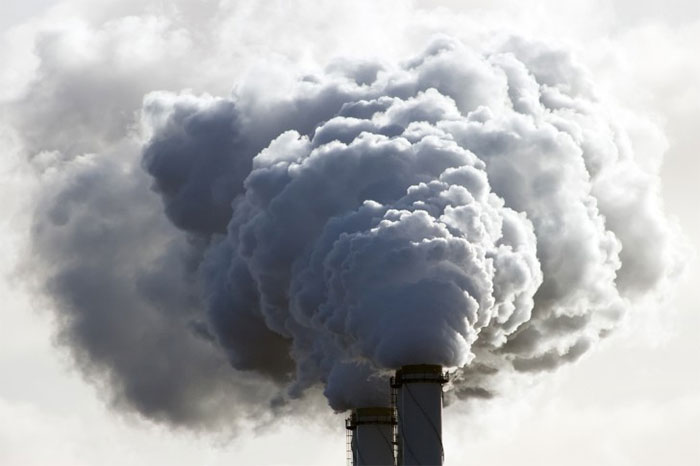Development of a compound that absorbs pollutants from the air
A team of European and Israeli engineers have developed a graphene-titanium dioxide mixture that covers the surface of buildings or streets that can absorb pollutants to improve air quality in cities. .

Compounds of graphene and titanium dioxide can be used to cover road surfaces, sidewalks, and walls to remove nitrogen oxides (Nox) that cause air pollution from car exhaust and factory smoke - ( Photo: Depositphotos)
According to Nanoscale , of all the air pollutants, the carbon dioxide causing the greenhouse effect is most noticeable. However, carbon dioxide is not the only culprit. Today, air pollution also contains nitric oxide (NO) and nitrous oxide (NOx) as well as volatile organic compounds - products of combustion without running out of fuel, other industrial processes. together.
Seeking to develop ways to clean the air from these substances, scientists turned to titanium dioxide (TiO 2 ) - a compound that has been widely used, for example, in dyes or sunscreen. . Titanium dioxide has the ability to absorb solar radiation photons and is a catalyst that quickly neutralizes various dangerous compounds in the air. However, so far, the efficiency of such a process is only about 45%, and recently, European and Israeli developers have only increased this index to 70%.
Graphene becomes a "secret ingredient" to increase efficiency. They obtained flat graphene structures by exfoliating graphite cells in solution with the addition of titanium dioxide nanoparticles. The powder with such small structures can be called a mixture of photocatalytic elements (nanoparticles) in a solid graphene matrix.
According to the authors of the study, this compound is quite convenient and stable, suitable for covering any road surface - whether it is roads, sidewalks, poles and walls of buildings. And under the action of sunlight, it passively cleans the air from nitrogen oxides (Nox), turning them into nitrates, which can be washed away by water. Tests with the use of rhodamine (a nitrogen-containing pigment similar to air pollutants) show that a graphene-titanium dioxide mixture destroys rhodamine 40% more efficiently than pure titanium dioxide. virginity. For nitrous oxide, this index is even higher than 70%.
- Bikini sucks pollutants in seawater
- Artificial 'foam' absorbs heavy metals
- Garlic against infection in children
- Roofs absorb pollutants
- Compounds that are more expensive than 30,000 times are found from rice
- Can the CBD compound extracted from cannabis can control mental disorders?
- Find the chemical compound that makes life on Earth
- Air pollution is more harmful through the skin through the airway
- Melting ice releases toxins from the 20th century
- New compounds prevent the development of cancer
- Asian monsoon: the cause of dispersing pollutants
- Precious substances from rice cause cancer cell death
 Chinese doctors have created medical masks that cover only the nose for convenience of eating and drinking
Chinese doctors have created medical masks that cover only the nose for convenience of eating and drinking Scientists have found a way to help you regrow new teeth after only 2 months
Scientists have found a way to help you regrow new teeth after only 2 months Do non-stick pans cause cancer? What alternatives are there?
Do non-stick pans cause cancer? What alternatives are there? Blisters around the body: Causes, symptoms and treatment
Blisters around the body: Causes, symptoms and treatment